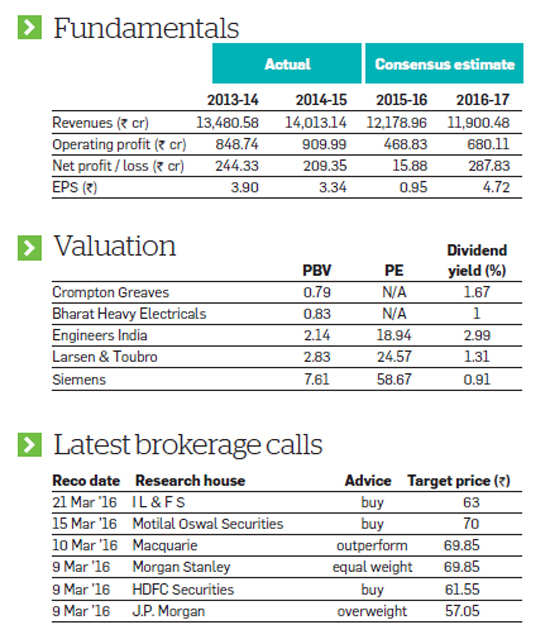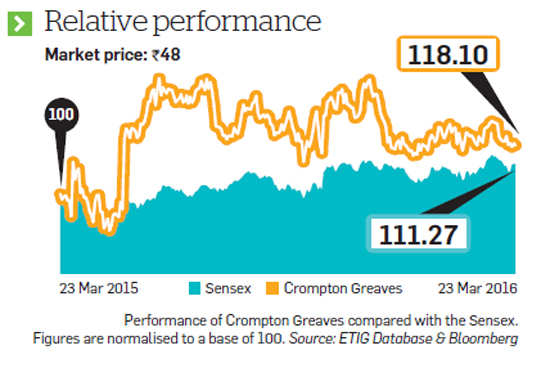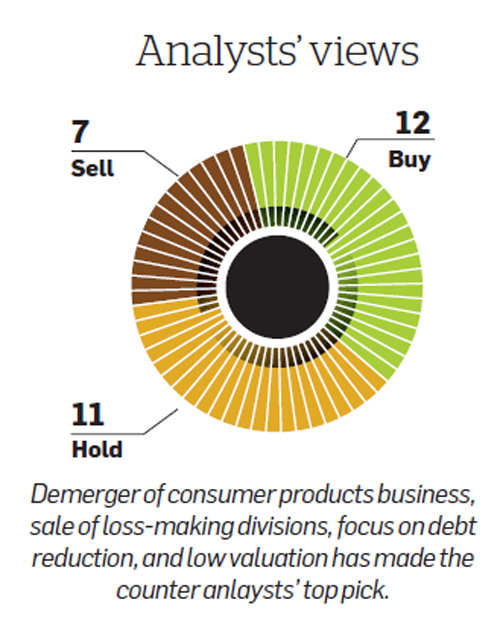100 Baggers: Stocks That Return 100-to-1 and How To Find Them
by Christopher W. Mayer
This is book based on a study of 100 baggers. It is like a sequel to Phelps book. The book is short and sweet with around 200 pages. It does not confuse us with theories and numbers. It throws a lot of stories about Wall Street and some great Investors. It refers to some more excellent books and studies. At the end of the reading even if you are not convinced about finding a 100X, you will learn to appreciate the importance of long term investing. A must read.
Some snippets from it
“One of the basic rules of investing is never, if you can help it, take an investment action for a noninvestment reason,” Phelps advised. Don’t sell just because the price moved up or down, or because you need to realize a capital gain to offset a loss. You should sell rarely, and only when it is clear you made an error. One can argue every sale is a confession of error, and the shorter the time you’ve held the stock, the greater the error in buying it—according to Phelps.
The biggest hurdle to making 100 times your money in a stock—or even just tripling it—may be the ability to stomach the ups and downs and hold on.
4 STUDIES OF 100-BAGGERS
1.Tony’s 100-Baggers
A fellow named Tony at TS Analysis published one informal 15-page study called “An Analysis of 100-Baggers.”
There was a good case study of a 100-bagger recently posted on the Microcap Club’s website by Chip Maloney. This is worth spending a little time on and illustrates Tony’s principles. Maloney reviewed MTY Foods, which is a Canadian franchisor of quick-service restaurants such as Thai Express, Extreme Pita and TCBY.
2. MOSL 100X Study
3.Martelli’s 10-Baggers
Presentation called “10x Return Stocks in the Last 15 Years,” by Kevin Martelli at Martek Partners.
4.Heiserman’s Earnings Staircase
Another study is by Hewitt Heiserman Jr., titled “Ben Graham and the Growth Investor.”
The 100-bagger population seems to favor no particular industry. There are retailers, beverage makers, food processors, tech firms and many other kinds. The only thing they seem to have in common is the subject of the study: they returned at least 100 to 1.
Median sales figure for the 365 names at the start was about $170 million and the median market cap was about $500 million. That’s interesting on two levels: One, it dispels a myth that to get a 100-bagger you have to start with tiny companies. True, these are small companies. But $170 million in sales is a substantial business in any era. It’s not a tiny 50-cent stock with no revenues or barely any revenues.Secondly, these figures imply a median price-to-sales ratio of nearly three, which isn’t classically cheap by any measure. Going through these 100-baggers, you’ll find stocks that looked cheap, but more often you find stocks that did not seem cheap based on past results alone.
So you must look forward to find 100-baggers. You have to train your mind to look for ideas that could be big, to think about the size of a company now versus what it could be.
Another interesting chart to look at concerns how long these stocks took to become 100-baggers. The average time was 26 years.
Case Studies : Monster Beverages, Amazon, Electronic Arts, Comcast, Pepsi, Gilette,
Key to 100 Baggers
“Over time,” Donville wrote, “the return of a stock and its ROE tend to coincide quite nicely.”
A lot of people don’t appreciate how important the ability to reinvest those profits and earn a high ROE is.
To sum up: It’s important to have a company that can reinvest its profits at a high rate (20 percent or better). ROE is a good starting point and decent proxy. I wouldn’t be a slave to it or any number, but the concept is important. You want to think about return on capital in some way—the higher, the better. You want to think about what a business can earn on the money invested in it and its ability to reinvest cash at that rate—the longer, the better. The road to 100-baggerdom is much, much harder otherwise.
In the pursuit of 100-baggers, it helps to back talent. Think about finding people who might be the next Jobs, Walton or Icahn. Invest alongside talented people. Many of the best-performing stocks of the past 50 years had such a key figure for at least part of their history.
The Outsiders: Eight Unconventional CEOs and Their Radically Rational Blueprint for Success, by William Thorndike.
Each of the Outsiders shared a worldview that “gave them citizenship in a tiny intellectual village.” Thorndike writes each understood that
• capital allocation is the CEO’s most important job;
• value per share is what counts, not overall size or growth;
• cash flow, not earnings, determines value;
• decentralized organizations release entrepreneurial energies;
• independent thinking is essential to long-term success;
• sometimes the best opportunity is holding your own stock; and
• patience is a virtue with acquisitions, as is occasional boldness
BET BIG
I can’t be involved in 50 or 75 things. That’s a Noah’s Ark way of investing—you end up with a zoo that way. I like to put meaningful amounts of money in a few things. — Warren Buffett
Thomas Phelps wrote, “Be not tempted to shoot at anything small,” the idea being you want to focus your capital on stocks with the potential to return 100x. You don’t want to own a zoo of stocks and ensure a mediocre result.
Moats
In his The Little Book That Builds Wealth, Dorsey uses an analogy for why you should pay attention to moats: “It’s common sense to pay more for something that is more durable. From kitchen appliances to cars to houses, items that last longer are typically able to command higher prices.. . . The same concept applies in the stock market.”
Companies that are more durable are more valuable. And moats make companies durable by keeping competitors out. A company with a moat can sustain high returns for longer than one without. That also means it can reinvest those profits at higher rates than competitors. As you’ve seen by now, this is an important part of the 100-bagger recipe. Moats take various forms. Here are some
• You have a strong brand.
• It costs a lot to switch.
• You enjoy network effects.
• You do something cheaper than everybody else.
• You are the biggest.
“Measuring the Moat: Assessing the Magnitude and Sustainability of Value Creation” is a 70-page report on the issue.
The central observation is that even the best industries include companies that destroy value and the worst industries have companies that create value. That some companies buck the economics of their industry provides insight into the potential sources of economic performance. Industry is not destiny.
Berry writes that “high gross margins are the most important single factor of long run performance. The resilience of gross margins pegs companies to a level of performance. Scale and track record also stand out as useful indicators.”
MISCELLANEOUS MENTATION ON 100-BAGGERS
Don’t Chase Returns
Keep that in mind before you reshuffle your portfolio after looking at year-end results. Don’t chase returns! And don’t measure yourself against the S&P 500 or any other benchmark. Just focus on trying to buy right and hold on.
Don’t Get Bored
In the financial markets, people often wind up sabotaging their own portfolios out of sheer boredom. Why else put money into tiny 70-centshare mining companies that have virtually no chance of being anything at all? Why bother chasing hyped-up biotech companies that trade at absurd levels based on flimsy prospects?
Don’t Get Snookered: Avoid Scams
Do Ignore Forecasters
Sosnoff ’s law. This comes from a book called Humble on Wall Street, published in 1975 and still one of the best books on the experience of investing, on what it feels like. Its author, Martin Sosnoff, wrote that “the price of a stock varies inversely with the thickness of its research file. The fattest files are found in stocks that are the most troublesome and will decline the furthest. The thinnest files are reserved for those that appreciate the most.”
In other words, the best ideas are often the simplest. If I find myself working really hard to justify keeping or buying a stock, I think of Sosnoff’s law. I’ve wasted countless hours on bad stocks and bad businesses.
I feel no shame at being found still owning a share when the bottom of the market comes. I do not think it is the business, far less the duty, of an institutional or any other serious investor to be constantly considering whether he should cut and run on a falling market, or to feel himself open to blame if shares depreciate in his hands. I would go much further than that. I should say it is from time to time the duty of a serious investor to accept the depreciation of his holdings with equanimity and without reproaching himself.
That excerpt comes from a letter in 1938 by one of the greatest investors of all time. He made money in one of the most difficult markets of all time—that of the Great Depression. He is John Maynard Keynes (1883–1946).
I also learned it was critically important to have some cash. “Cash was king,” Feldman writes of the depths of the Great Depression. “If you happened to have any, you were really in the driver’s seat.” Cash means you have options and you are not reliant on fickle lenders.
The Essential Principles of Finding 100-Baggers
#1 You Have to Look for Them
So, rule number one for finding 100-baggers is that you have to look for them—and that means you don’t bother playing the game for eighths and quarters, as the saying goes. Don’t waste limited mental bandwidth on stocks that might pay a good yield or that might rise 30 percent or 50 percent.
You only have so much time and so many resources to devote to stock research. Focus your efforts on the big game: The elephants. The 100-baggers.
#2 Growth, Growth and More Growth
So, you need growth—and lots of it. But not just any growth. You want value-added growth. You want “good growth.” If a company doubles its sales, but also doubles the shares outstanding, that’s no good. You want to focus on growth in sales and earnings per share.
Likewise, if a company generates a lot of extra sales by cutting its prices and driving down its return on equity, that may not be the kind of growth you’re looking for. You want to find a business that has lots of room to expand—it’s what drives those reinvestment opportunities.
#3 Lower Multiples Preferred
You don’t want to pay stupid prices.
#4 Economic Moats Are a Necessity
A 100-bagger requires a high return on capital for a long time. A moat, by definition, is what allows a company to get that return. Therefore, it pays to spend some time thinking about what kind of moat a company has.
#5 Smaller Companies Preferred
Start with acorns, wind up with oak trees. Start with oak trees, and you won’t have quite the same dramatic growth. It may seem obvious, but it’s important.
#6 Owner-Operators Preferred
#7 You Need Time:
Use the Coffee-Can Approach as a Crutch. Once you do all this work to find a stock that could become a 100-bagger, you need to give it time. Even the fastest 100-baggers in our study needed about five years to get there. A more likely journey will take 20–25 years.
#8 You Need a Really Good Filter
There is a world of noise out there. The financial media is particularly bad. Every day, something important happens, or so they would have you believe. My own study of 100-baggers shows what a pathetic waste of time this all is. It’s a great distraction in your hunt for 100-baggers.
#9 Luck Helps
Let’s face it. There is an element of luck in all of this.
#10 You Should Be a Reluctant Seller
I’ll end this section on when to sell with one of my favorite quotes, from Martin Whitman at Third Avenue Funds: “I’ve been in this business for over fifty years. I have had a lot of experience holding stocks for three years; doubled, and I sold it for somebody else, for whom it tripled in the next six months. You make more money sitting on your ass.”





